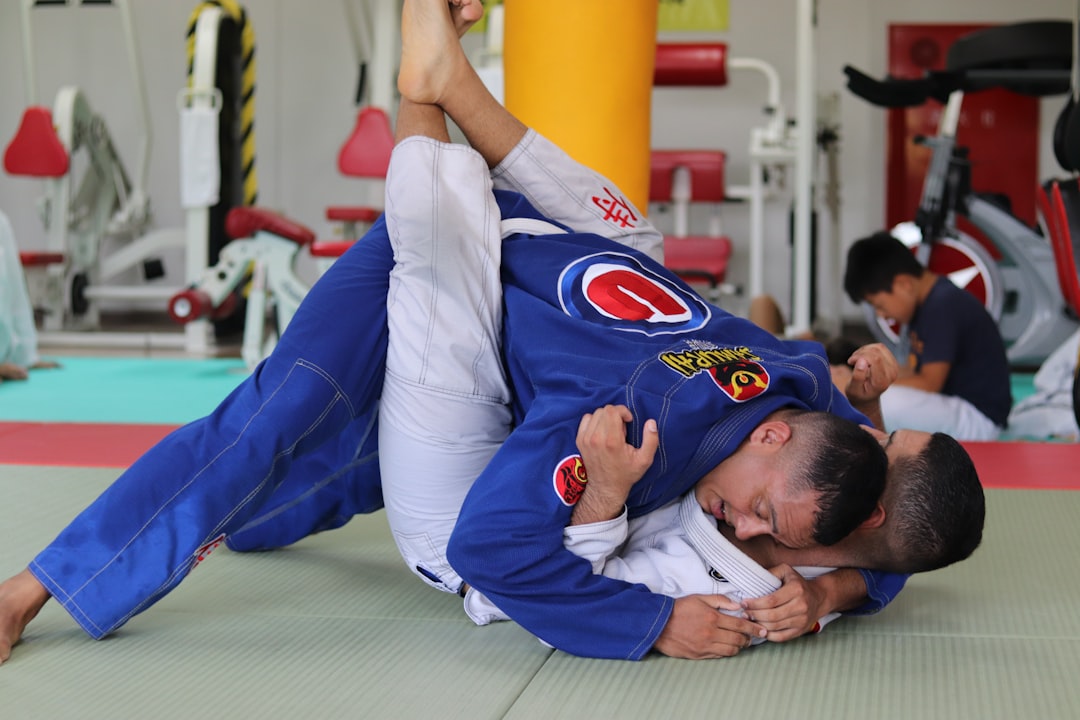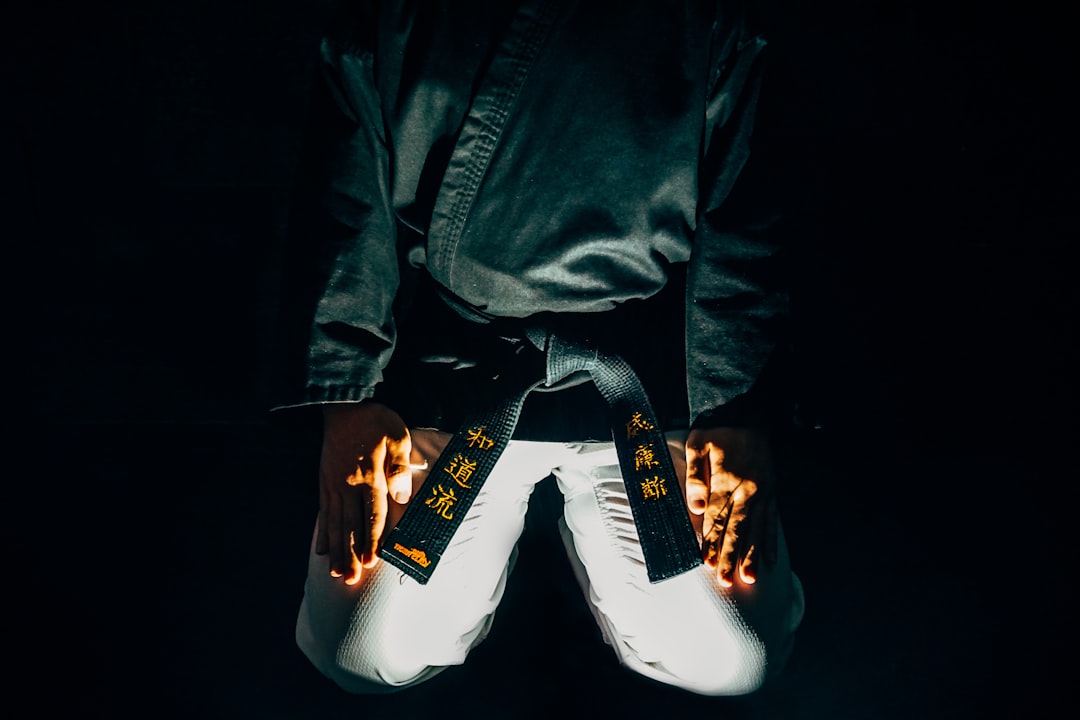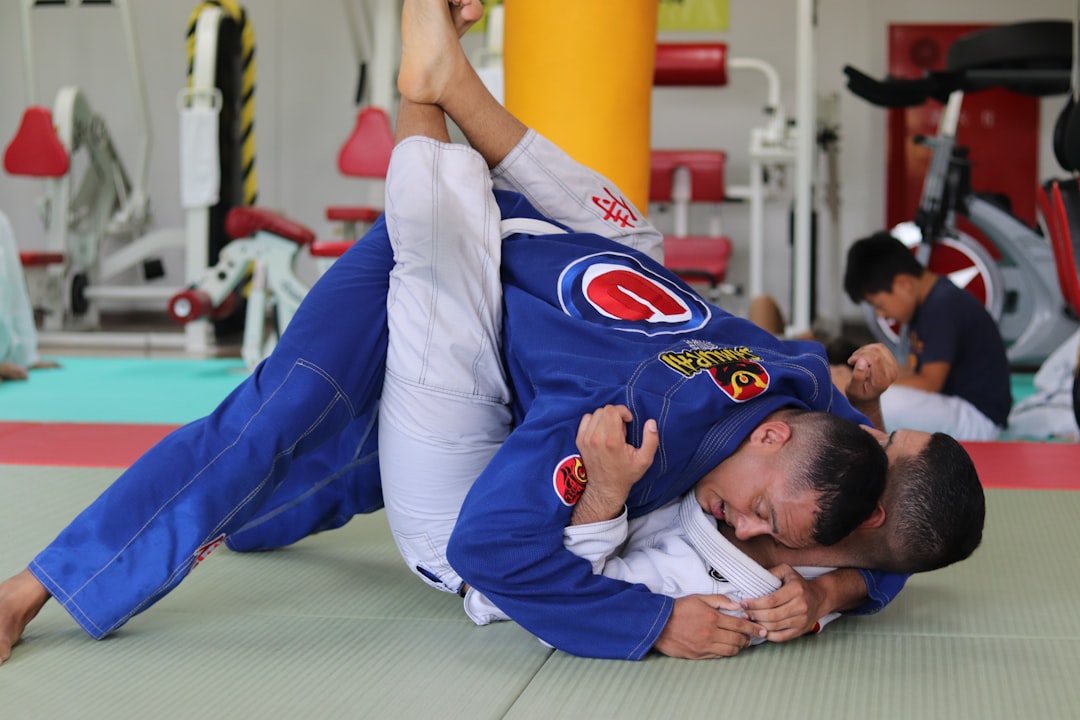The karate uniform, known as a keikogi or gi, is distinct from other martial arts' attire, designed for both cultural respect and practical functionality. It consists of the uchiwa (top) and are (bottoms), often complemented by an obi belt, with color variations indicating rank. The evolution of the karate gi reflects a blend of traditional Okinawan garments and global adaptations to suit diverse climates and training needs. Made from durable yet flexible materials like cotton or hemp blends, the uniform's tailored design—with a short jacket and wide sleeves for mobility, and wider-at-the-hip trousers that taper to the ankle—ensures comfort and movement without compromising on the karate uniform's traditional values of discipline and respect. When selecting a karate gi, consider the fabric's quality for durability, flexibility, and breathability, as well as the fit and design, which should cater to your movements and rank, ensuring optimal performance during practice.
Exploring the traditions and technicalities of martial arts, a key component often overlooked is the attire that practitioners don. Among these, the karate uniform, known as a ‘Gi,’ holds significant importance. This article delves into the essence of a Gi, tracing its historical evolution to understanding its defining characteristics. Whether you’re a novice or a seasoned martial artist, selecting the right Gi is crucial for comfort and performance during practice. Join us as we dissect what constitutes a true karate uniform and why ‘Gi’ is the term that encapsulates this garment’s identity in the realm of martial arts.
- Understanding the Essentials: What Is a Karate Uniform Called?
- The Evolution of Karate Gi: A Historical Perspective
- Key Characteristics Defining a Traditional Karate Uniform
- Selecting Your Gi: Material, Style, and Sizing Considerations for Practitioners
Understanding the Essentials: What Is a Karate Uniform Called?

When engaging in the practice of karate, practitioners don their traditional attire, often referred to as a do-gi or keikogi outside of Japan. But what exactly is the specific name for a karate uniform? Is it distinct from other martial arts garments? A karate uniform, specifically designed for the discipline, typically bears certain characteristics that set it apart from other do-gis used in different martial arts. It is usually made of cotton or a cotton blend and features a simple, yet functional design. The top part, known as the “gi-top” or “uchiwa,” is buttoned up to the neck, and the bottom part, called the “gi-bottom” or “are,” resembles pants that are sometimes tucked into a belt, known as an obi, which is tied at the waist. This attire serves not just as a uniform but also as a symbol of respect for the discipline and its traditions. Is it always necessary to wear a karate uniform specifically designed for karate, or can any do-gi be used? While a plain white do-gi is acceptable in most cases, it is highly recommended to use a karate-specific uniform as it adheres to the specific requirements of the art, providing both functionality and respect to the tradition. The fit and fabric are carefully considered to ensure comfort and durability during practice, reflecting the discipline’s focus on precision and control.
The Evolution of Karate Gi: A Historical Perspective

The evolution of karate gi reflects a blend of practicality and cultural significance, tracing its roots back to ancient martial arts attire. Initially, practitioners in Okinawa wore simple cotton garments that allowed for freedom of movement during practice. As karate spread beyond its island origins, the design of these training outfits adapted to meet the needs of different climates and cultural norms. What do you call a karate uniform? A karate gi is the traditional attire worn by practitioners in karate training and grading. The term ‘gi’ itself is derived from the Japanese word for clothing or garment, and it has undergone subtle changes over time to become the standardized form we recognize today.
The transformation of the karate uniform name into the modern gi involved a shift from less structured garments to the more familiar white jacket and trousers. This standardization facilitated global recognition and unity within the martial arts community, emphasizing the universal principles of discipline and respect inherent in karate practice. The trousers, for instance, were initially wider and looser but evolved into a slimmer cut to enhance performance and comfort during rigorous training sessions. Similarly, the jacket underwent modifications to achieve a balance between traditional aesthetics and functionality, ensuring that practitioners could execute techniques without hindrance while still adhering to the rich heritage of karate’s roots.
Key Characteristics Defining a Traditional Karate Uniform

A traditional karate uniform, often referred to as a “keikogi” or simply a “gi,” is characterized by its simplicity and functionality, designed to facilitate the movements required for effective practice. The keikogi typically consists of a jacket, trousers, and belt, each with specific features that distinguish it from other martial arts attire. The jacket, known as the “uwagi,” is a shorter jacket with wide sleeves, allowing for an unobstructed range of motion. It is usually made of heavy cotton or hemp material, which provides durability without excessive rigidity. The trousers, called “bogu hakama,” are wider at the hip and taper towards the ankles, offering ease of movement while accommodating a variety of body types. Both the jacket and pants are designed to be loose-fitting yet not overly baggy, enabling practitioners to perform techniques with clarity and precision. The belt, or “obi,” ties at the waist and serves to secure the uniform, ensuring it stays in place during vigorous training sessions. The choice of color for the keikogi often signifies the rank or level of the wearer within the karate discipline, with white typically reserved for higher ranks and black or darker hues for lower belts.
The traditional karate uniform is not only a garment but also a symbol of respect and discipline in the martial arts community. The term “karate uniform name” encompasses the keikogi and its components, each serving a purpose that goes beyond mere clothing. It is a practical attire that has stood the test of time, adapting slightly to modern tastes while retaining the core principles of simplicity and functionality that have made it an iconic piece in karate practice. The uniform is a tangible representation of the values upheld by karateka, emphasizing modesty, respect for tradition, and a commitment to personal growth and mastery of the art.
Selecting Your Gi: Material, Style, and Sizing Considerations for Practitioners

When selecting a karate uniform, commonly referred to as a gi, there are several key factors to consider to ensure both comfort and functionality during practice. The material of your gi is paramount; it should be durable enough to withstand frequent use while also allowing for ease of movement and breathability. Cotton and hemp blends are traditional choices that provide a good balance between durability and flexibility, making them suitable options for practitioners. Does the fabric of the gi feel sturdy yet allow for full range of motion? A high-quality gi, whether it’s a traditional white or a different color as per your dojo’s regulations, should meet these criteria.
In terms of style, there are two primary types of karate gis to choose from: the traditional Japanese judogi and the more modern Shotokan gi. The judogi typically has a wider cut and may offer more coverage, which can be preferable for beginners who are not yet accustomed to the movements’ requirements for fit. On the other hand, the Shotokan gi is tailored specifically for karate practice, offering a slimmer fit that allows for better mobility. What style of gi aligns with your personal preference and the practices of your dojo? Additionally, sizing is crucial; a gi that is too large can hinder movement, while one that is too small can restrict blood flow and comfort. Ensure you select the appropriate size by referring to the specific measurements provided by the manufacturer, taking into account your height, weight, and body type. Remember, the ideal gi should fit snugly without being overly tight, allowing for unhindered performance during training.
In wrapping up our exploration of the karate uniform, it’s clear that understanding what a karate uniform is called—a “gi”—is just the beginning. The historical perspective reveals the evolution from functional attire to a symbol of discipline and respect within the martial arts community. Key characteristics defining a traditional karate uniform underscore its purpose and significance in maintaining the integrity of the practice. When selecting your gi, considerations around material, style, and sizing ensure that you honor the tradition while also meeting your individual needs as a practitioner. Whether you are a beginner or an experienced martial artist, the karate uniform name serves as a reminder of the rich history and cultural importance of this timeless garment in the practice of karate.
